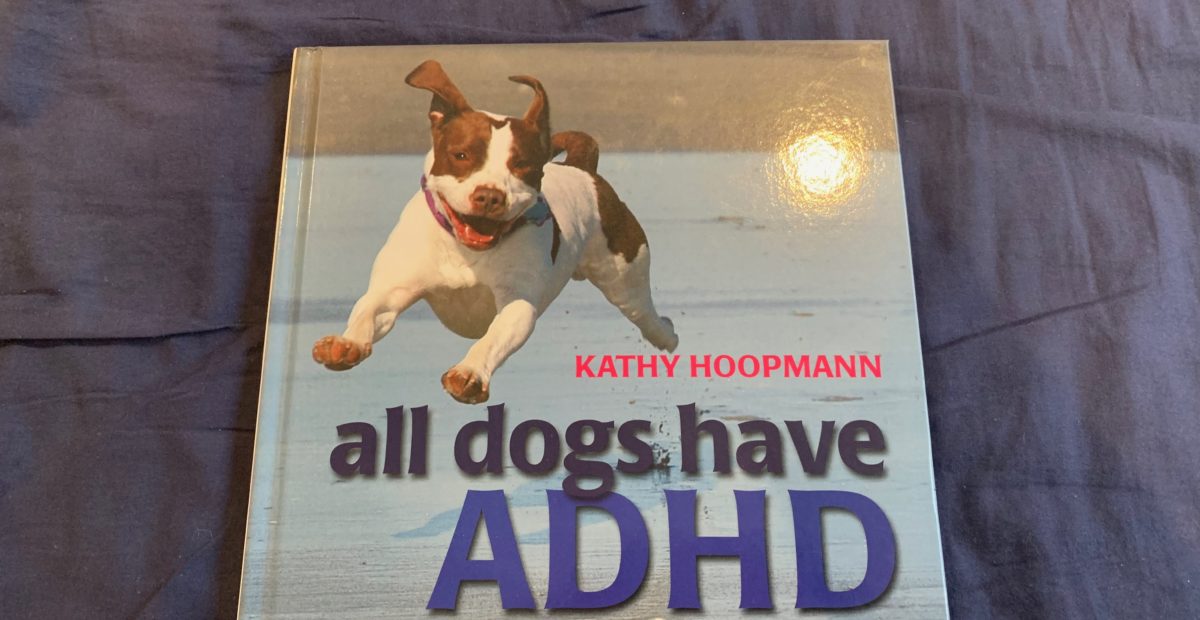Book Review: All Dogs Have ADHD

All photography in this blog post is by April Slocombe unless otherwise stated.
Introduction
‘All Dogs Have ADHD’ (note: the book in the link has a different cover design from the one in the featured image) is a book that Kathy Hoopmann wrote. She wrote it to educate children and their families about ADHD through various stock images of dogs from Shutterstock.co.uk and explanations of ADHD traits. Hoopmann’s other book ‘All Cats Have Asperger Syndrome’ also uses stock images from Shutterstock.

The book begins with an introduction that explains what ADHD is. The introduction explains that children on the ADHD spectrum “can have problems in three main areas.” They are:
- Finding it hard to keep focused
- Being hyperactive
- Being impulsive
The introduction also explains that “everyone finds it hard to focus, or they are hyperactive or impulsive occasionally;” however; “the term ADHD is only used when a person has these traits so often that it disrupts their lives.” It also says that “not every child with ADHD has all the traits” that are mentioned throughout the book.

The book then suggests that ADHD “may be detected soon after a child is born.” This is similar to how Mack from Storybooth’s video about her living with ADHD claims to have had ADHD since birth.
ADHD Symptoms and Traits this Book Mentions
- Insomnia
- Attempting to escape
- Having a desire to explore
- Wanting something immediately
- Rushing into situations “without thinking of the consequences”
- Being “easily disorientated”
- “Always losing things”
- Not knowing how to take turns or share
- Being rougher than intended
- Being “distracted by things other people don’t notice”
- Finding it hard to “sit still for long”
- Sensory overload (similar to an autistic trait)
- Going “from one task to the next without finishing anything”
- Finding books “hard to understand” (similar to a dyslexia symptom)
- Not knowing where to start
- Difficulty with following instructions
- Becoming easily bored
- Having a tantrum when things get too much
- High sensitivity
- Having “fierce” concentration on a topic of interest
Strengths of ADHD

- Having “a loving, caring nature”
- `Being “so much fun!”
- Being “very bright” or intelligent
- Easily seeing the ‘big picture’
- Finding “solutions where others don’t think to look”
- Having legendary creativity
- “Willing to try new things”
Famous Historical Figures Who Had ADHD or Were Believed to Have Had It

Image by Pixabay, Pexels.com
- Henry Ford (he also had dyslexia)
- Leonardo da Vinci (he too had dyslexia besides ADHD)
- Alexander Graham Bell
Conclusion
‘All Dogs Have ADHD’ has several cute photographs of dogs throughout and easy to read descriptions of symptoms, traits and advantages of children with ADHD. Some cons of the book include a sole emphasis on children with ADHD (adults can have it too) as well as males who have it because the child with ADHD who is likened to the dogs throughout the book is referred to as “he,” which could show that ADHD is more common in boys than girls.




